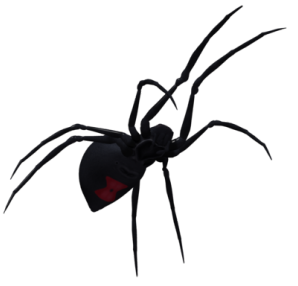Country of Origin: Mexico
Natural Environment and Behavior:
The Brachypelma klaasi, commonly known as the Mexican pink tarantula or the Western Mexican pink tarantula, is a species native to the dry forests of Mexico. Their natural habitat is semi-arid, and when creating a suitable environment for them, it is important to replicate these conditions.
For the substrate, a mix of peat moss, vermiculite, and coconut fiber works well. This substrate should allow for digging and burrowing, as these tarantulas exhibit such behavior. It’s crucial to maintain the substrate slightly damp, avoiding excessive wetness.
The enclosure should be kept around 24-29°C. Heat pads can be used to achieve and maintain the appropriate temperature.
While these tarantulas come from semi-arid regions, a water dish should be provided to maintain humidity. However, care should be taken not to make the enclosure too humid, as excess moisture can lead to health issues.
Hideouts or shelters, such as half logs or cork bark, should be offered for the tarantula to retreat to when it seeks privacy or security. Behaviorally, Brachypelma klaasi is known for its burrowing tendencies, they may spend a significant amount of time hidden in their burrows.
Feeding should consist of appropriately-sized live prey, such as crickets, roaches, or mealworms. The frequency of feeding depends on the tarantula’s age.
During molting, tarantulas are vulnerable, so provide a quiet and undisturbed environment, avoiding handling or feeding until the tarantula has fully recovered.
In summary, replicating a semi-arid environment with suitable substrate and considering the natural behaviors and needs of Brachypelma klaasi is crucial for their well-being in captivity.
All Brachypelma species possess some degree of red coloring except for one, B. klaasi. It is the only pink Brachypelma.
Longevity:
Females: 20 to 30 years, males: 5 to 10 years.
Size:
Females up to 15cm and males up to 10cm.
Husbandry:
Keep at 65-80% humidity and 21-29°C for temperature, use a mixture of peat moss, vermiculite, coconut fiber and dirt for firmness.
Enclosure Size:
Spiderlings: A small container with dimensions around 10-15 cm in length, 10 cm in width, and 5-8 cm in height is suitable. Provide a few centimeters of substrate for burrowing and a small hide.
Juveniles: Dimensions around 20-30 cm in length, 20 cm in width, and 15 cm in height is appropriate. Ensure there is enough substrate for burrowing, a hide, and a water dish.
Adults: A tank with dimensions around 30 cm in length, 30 cm in width, and 25 cm in height or larger should provide enough space.
